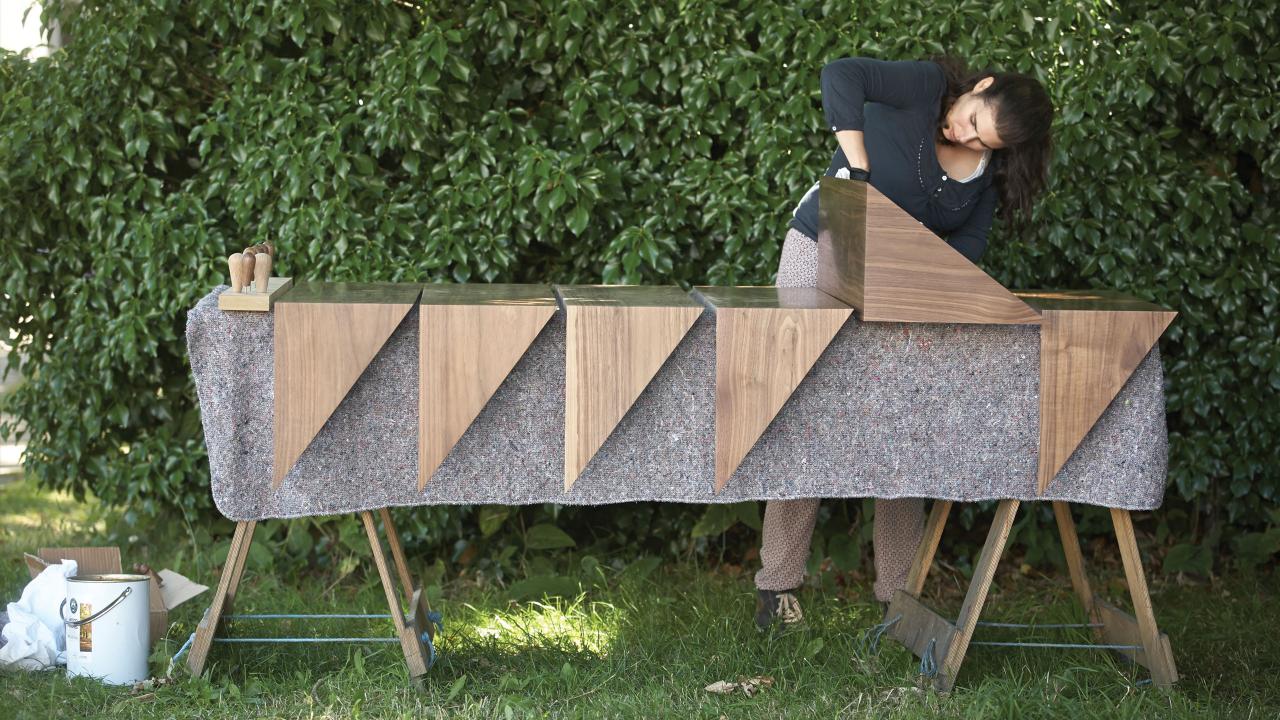The wood content of the door was the major determinant of environmental impact, both positive and negative. This was a consequence of the relative simplicity of the design which allowed the wood to speak for itself and avoided the need for elaborate processing and finishing.
The door is composed of American white oak, one of the most abundant hardwoods in the U.S. forest accounting for 15% of wood volume. U.S. government forest inventory data shows that U.S. white oak is growing 36 million m3 per year while the harvest is only 19.3 million m3 per year. After harvesting, an additional 16.7 million m3 of white oak accumulates in U.S. forests every year. It takes around a quarter of a second for new growth in the U.S. forest to replace the hardwood for the door.
The shelves are made of American walnut which, while not the most abundant of U.S. hardwoods, is a large and expanding resource. Every year, 2.4 million m3 of walnut accumulate in U.S. forests even after harvesting. It only takes around two seconds for new growth in the U.S. forest to replace the walnut logs harvested to manufacture the shelves.

